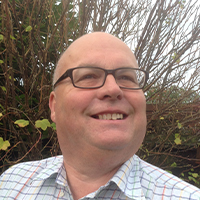Great minds and all that – How to create a shared vision for your charity
Amongst the Action Planning team there are a number of us who have been CEO of charities and/or social enterprises. Some of us enjoyed the experience and some less so. Some were CEO of larger operations and some smaller.
In my case, I was the first employee of a new start community enterprise, which was the successor to a New Deal for Communities programme. More than a decade after I left that role I am still reflecting on the experience. It informed work following that post and will continue to inform future work.
The key learning point is that of shared vision and depth of buy-in to that vision. I had a trustee board of 11 and, as events unfolded, it became obvious that there was not a shared vision and no real prospect of developing one. This was not entirely the fault of the board; it was the fault of the CEO as well. So, what should we have done differently?
Recipe for good governance
1. The relationship between the Chair and the CEO is crucial. Equally crucial is the relationship between the Chair and the wider board. I could not have wished for a more supportive Chair. The vision, as he saw it, was being delivered. Unfortunately the vision, as seen by a substantial minority of the board, was not being delivered as they saw it. Where was the divergence? It was based around reserves and forward financial planning. Which leads me to…
2. A reserves policy should be as much of a vision as anything else. If there is a view that forward planning means “adequate” (and that is a word that can be debated ad infinitum), then that has to appear in policies. Some work around “normal” expenditure may also be needed. Is it past year, planned future year or planned future years? The purpose of a charity is not to accumulate money. Equally, there has to be longevity.
3. The vision should be supported by a business plan, which is reviewed on a regular basis. The frequency will be determined by activities. In expansion mode (I took the operation from a zero base to seven figure asset base, six figure turnover and five figure annual surplus in a four year period) the frequency is very frequent indeed. However, such frequency does lead to the danger of not reviewing the strategic vision and testing that. We were very good on the “what”, we were less good on the “why”.
4. It is always good to develop actions that meet both the “what” and the “why”. In our case we made acquisitions that enabled employment space to be created; we developed community space and adopted a route of facilitation rather than direct delivery. This did lead to a reduced sense of ownership by some trustees.
The matter is complicated. Vision is something that needs to be reset from time to time. This does not mean a change of direction – except when it does. It may mean a recovery of the route to due North when there has been a deviation to magnetic North.
It may mean an away day, which involves an investment of time and money. A facilitated away day will enable CEO and trustee board to approach the issue from the same direction, which increases the likelihood of a shared result and a full sense of stake holding as the future unfolds.
Shared development of vision, perhaps including a senior leadership team beyond just the CEO, is a route to shared objectives and recognised outcomes. These are crucial to good governance.
The distinction between objectives and outcomes is critical. It is the outcomes – which are often seen as being more “woolly” than objectives – that lead to development. This enables the trustee board to have an overall view of the course, whilst allowing the CEO and staff team to navigate the rocks.
Without the overall course the route cannot be navigated; without appropriate steering the destination is not going to be reached.
Need help getting your whole board pulling together? Talk to action planning today.
Please call 01737 814758 or email office@actionplanning.co.uk

Andrew Rainsford is a specialist consultant in the Christian sector, helping churches with matters concerning buildings, capacity building, project development, income generation and community enterprise. He has 28 years experience in funding and third sector management and now engages with projects that will make a difference to the community.

